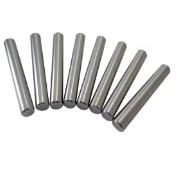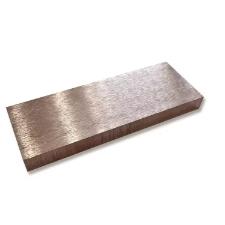**Metal Plate Bonding Secrets: Joining Strength to Strength**
(How To Connect Two Parallel Metal Plates)
Ever faced two metal plates needing to become one solid piece? It happens constantly, from building massive machines to fixing a garden gate. Connecting parallel metal plates seems simple. It isn’t just about slapping them together. Doing it wrong means weak joints, rattling parts, or worse, things falling apart. This guide cuts through the confusion. We’ll explore the smart ways to make those plates stick together like they were born that way. Forget guesswork. Let’s lock in the knowledge.
**1. What Connects Metal Plates?**
Metal plates need strong, reliable connections. Think of bridges, trucks, or your home’s frame. The forces are huge. So, how do we link them? Several methods exist, each with its place. The big players are bolts and nuts, rivets, welding, and adhesives. Bolts and nuts involve drilling holes through both plates. You slide a bolt through, thread a nut on the other side, and tighten. Rivets are permanent. You insert a rivet into a hole, then smash or pull its tail end to form a second head, clamping the plates. Welding melts the metal where the plates touch. The molten metal mixes, cools, and fuses the plates into one solid piece. Adhesives are super-strong glues made for metal. You spread the glue between the plates, clamp them, and wait for it to cure. Each method has pros and cons. Bolts allow disassembly, rivets are super tough once set, welding gives the strongest bond if done right, and adhesives spread stress evenly without holes. Choosing depends on the job’s needs.
**2. Why Connect Metal Plates?**
You don’t just connect plates for fun. There’s always a purpose. The main reason is strength. One plate alone might bend or break under load. Two plates fastened together share the load, making the whole structure much stronger. Think of steel beams in buildings. They are often made by joining plates. Stability is another big reason. Connected plates resist twisting and buckling far better than loose pieces. This is vital for anything that moves, like vehicles or machinery frames. Connection also creates larger surfaces. Need a big platform or a wide shield? Joining plates makes it possible. Sometimes, it’s about forming complex shapes. You build up structures by attaching plates at angles or stacking them. Electrical grounding is another reason. Properly connecting metal plates ensures electricity flows safely to the ground, preventing shocks or fires. Connecting plates isn’t just sticking metal together. It’s about building something reliable and safe.
**3. How To Connect Metal Plates Properly**
Connecting plates demands care. Rushing leads to weak joints. First, prepare the surfaces. Dirt, oil, or rust ruins any bond. Clean both plate surfaces thoroughly. Use a degreaser and sandpaper or a wire brush. Make sure they are bone dry. Next, align the plates perfectly. They must sit flush and parallel. Use clamps to hold them tightly in place. Now, choose your method. For bolting, mark and drill holes through both plates. Match the hole size exactly to your bolt diameter. Deburr the holes to remove sharp edges. Insert the bolt, add a washer if needed, thread on the nut, and tighten evenly with a wrench. Don’t overtighten and strip the threads. For riveting, mark and drill holes. Insert the rivet. Use a rivet gun or hammer to deform the tail, forming the second head. The rivet should be tight. Welding requires skill and safety gear. Clean the joint area exceptionally well. Tack weld points first to hold alignment. Then run a continuous weld bead along the seam. Ensure good penetration. Adhesive bonding needs precise glue application. Follow the glue maker’s instructions. Spread an even layer on one surface. Clamp the plates firmly. Wait the full cure time before stressing the joint. Check alignment constantly. Measure twice, connect once.
**4. Where Connected Metal Plates Shine**
Connected parallel plates are everywhere. Look around. In construction, steel beams are giant connected plates holding up skyscrapers and bridges. Factory machines rely on heavy plate frames bolted or welded together for stability. Transportation depends on it. Truck trailers, ship hulls, and airplane wings all use joined plates for their strength and shape. Even your car’s chassis uses this principle. Everyday objects use it too. Filing cabinets, shelving units, and appliance housings are often made from connected sheet metal. Electronics enclosures shield delicate circuits using small metal plates screwed or riveted together. Art and sculpture use joined plates for large metal structures. The backyard barbecue grill? Likely has plates bolted or riveted. Anywhere you need strength, rigidity, or a large surface from smaller pieces, connecting parallel metal plates is the answer. It’s a fundamental building block of the modern world.
**5. Metal Plate Connection FAQs**
People often have questions about joining plates. Here are common ones:
* **Q: My bolts keep loosening. Help?**
A: Use lock washers or lock nuts. Apply thread-locking compound (like Loctite) to the bolt threads before tightening. Ensure you tightened them enough initially.
* **Q: Can I weld any type of metal plate together?**
A: No. Welding works best on similar metals. Steel welds to steel easily. Aluminum needs special techniques and welders. Dissimilar metals, like steel to aluminum, are very hard to weld directly. Often, bolting is better.
* **Q: How do I prevent rust between the plates?**
A: Surface prep is key. Clean perfectly before joining. For bolted or riveted joints, apply a corrosion-inhibiting primer or paste between the plates before assembly. Seal the edges with paint or sealant after.
* **Q: Is adhesive strong enough for heavy loads?**
A: Modern structural adhesives are incredibly strong, often stronger than the metal itself in shear. The bond area must be large enough. Surface prep is absolutely critical. Follow the adhesive manufacturer’s specs for load limits.
* **Q: How do I align large, heavy plates?**
A: Use strong clamps, jacks, or temporary braces. Measure diagonally across the plates. Equal diagonal measurements mean it’s square. Use a straight edge and level constantly. Tack welding or temporary bolts can hold alignment for final connection.
* **Q: Rivets vs. Bolts: Which is stronger?**
(How To Connect Two Parallel Metal Plates)
A: A properly installed rivet fills the hole completely and can handle vibration well, often used in aircraft. High-strength bolts, correctly torqued, also offer immense strength and allow disassembly. The “stronger” method depends on the specific application and installation quality.
Inquiry us
if you want to want to know more, please feel free to contact us.


